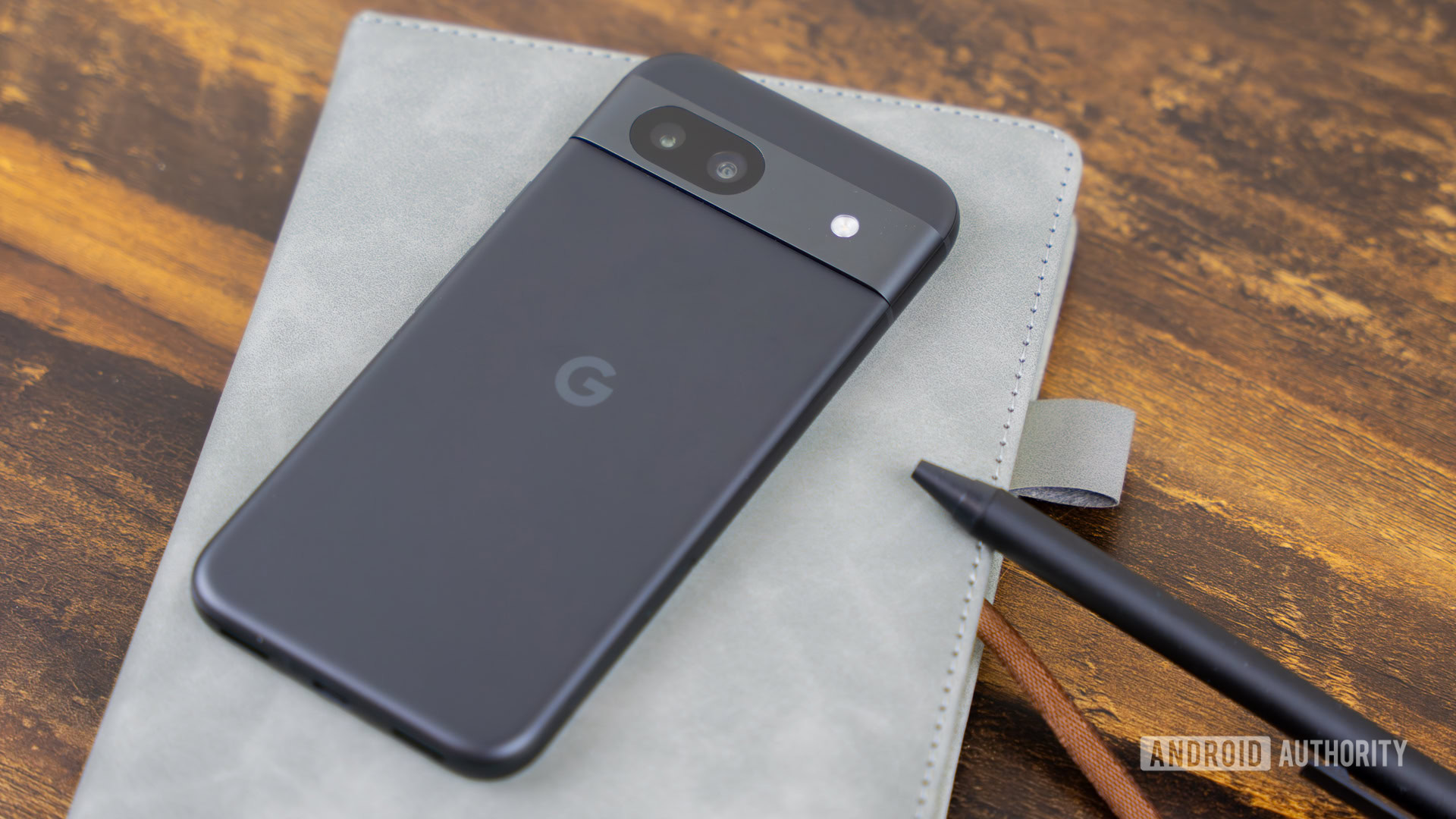Affiliate links on Android Authority may earn us a commission. Learn more.
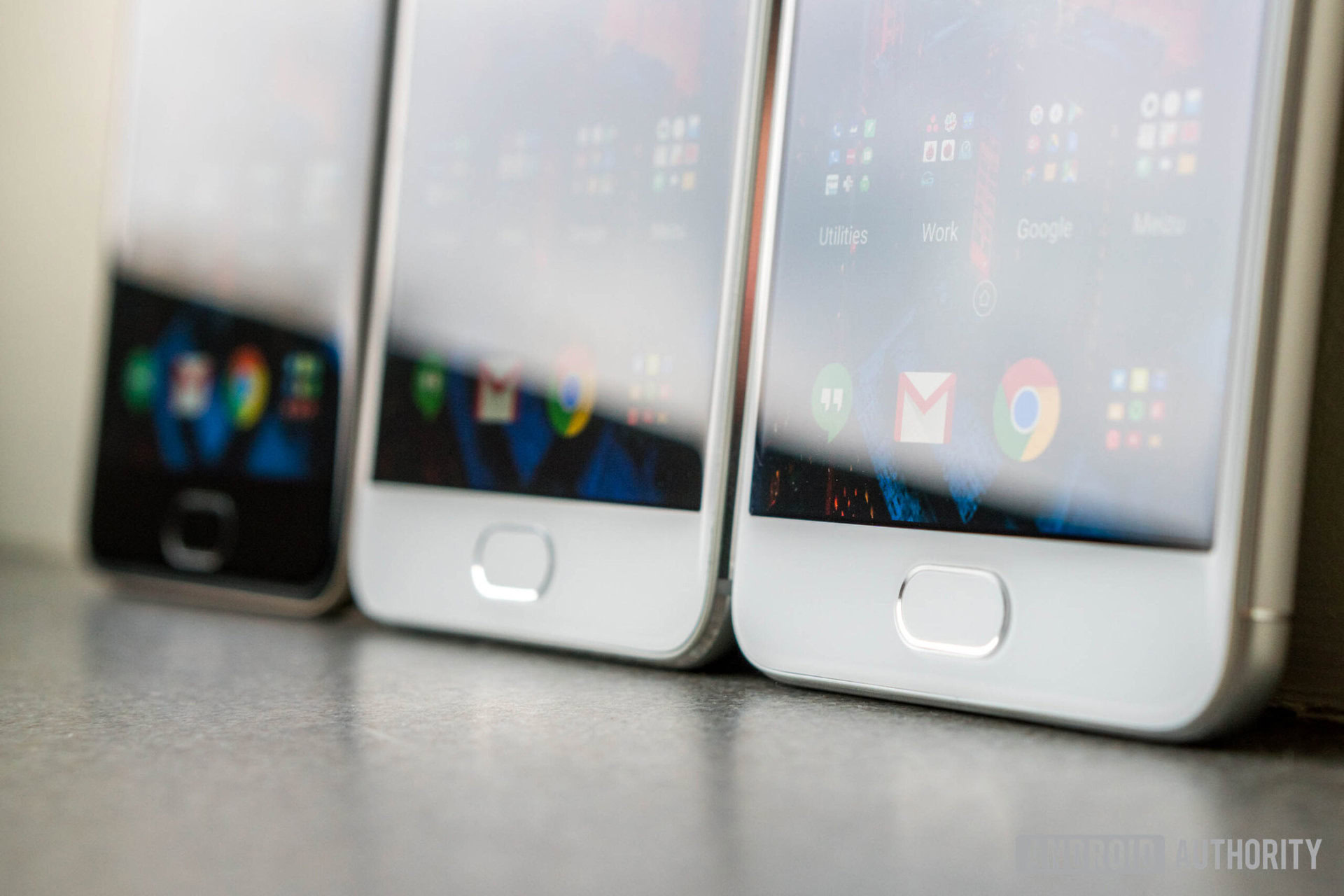
Meizu M5, M5s, and M5 Note review
May 9, 2017
Meizu M5, M5s, and M5 Note
What we like
What we don't like
Our scores
Meizu M5, M5s, and M5 Note
Unlike virtually every Western smartphone manufacturer, Meizu has long delivered ultra-affordable smartphones with surprisingly few compromises. While the company has been no stranger to controversy with Apple-esque designs, alleged patent infringement, and benchmark cheating, it’s difficult to dismiss the amount of value Meizu brings to the table.
As a sequel to the M3 series, the M5 series looks quite promising on the surface. For just around $100, it appears that you can get a well-built, reasonably functional smartphone. So, does this perception reflect reality? If yes, are Meizu’s offerings superior to the competition? Let’s find out in our comprehensive review of the Meizu M5, M5s, and M5 Note!
More Meizu
Design
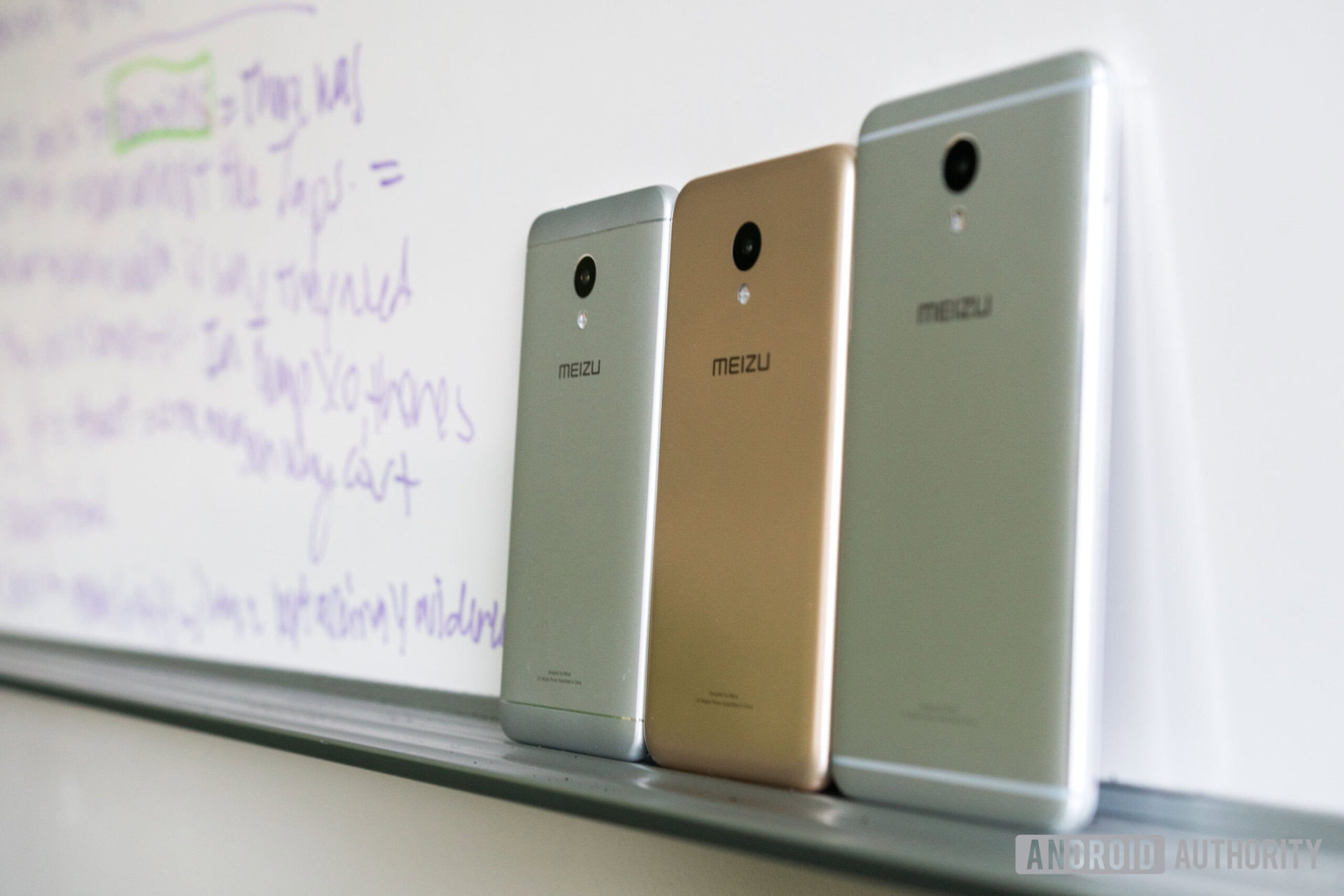
The Meizu M5s and Meizu M5 Note follow Meizu’s standard design language. That is to say that they feature somewhat boxy, premium metal shells with deliberate antenna lines and craftily chamfered edges. The M5 Note is without plastic top and bottom caps, but otherwise is simply a slightly larger version of the M5s.
Meizu was able to deliver premium hardware at a fraction of the cost of the competition
Thus, the physical aspects of the M5s and M5 Note are pretty much identical. While you could certainly argue that these designs are derivative, it remains quite impressive that Meizu was able to deliver such premium hardware at a fraction of the cost of the competition. The relative scratch resistance, cleanly and consistently machined edges, and tactile power and volume buttons are all features that we wish we’d see more of in this price category.
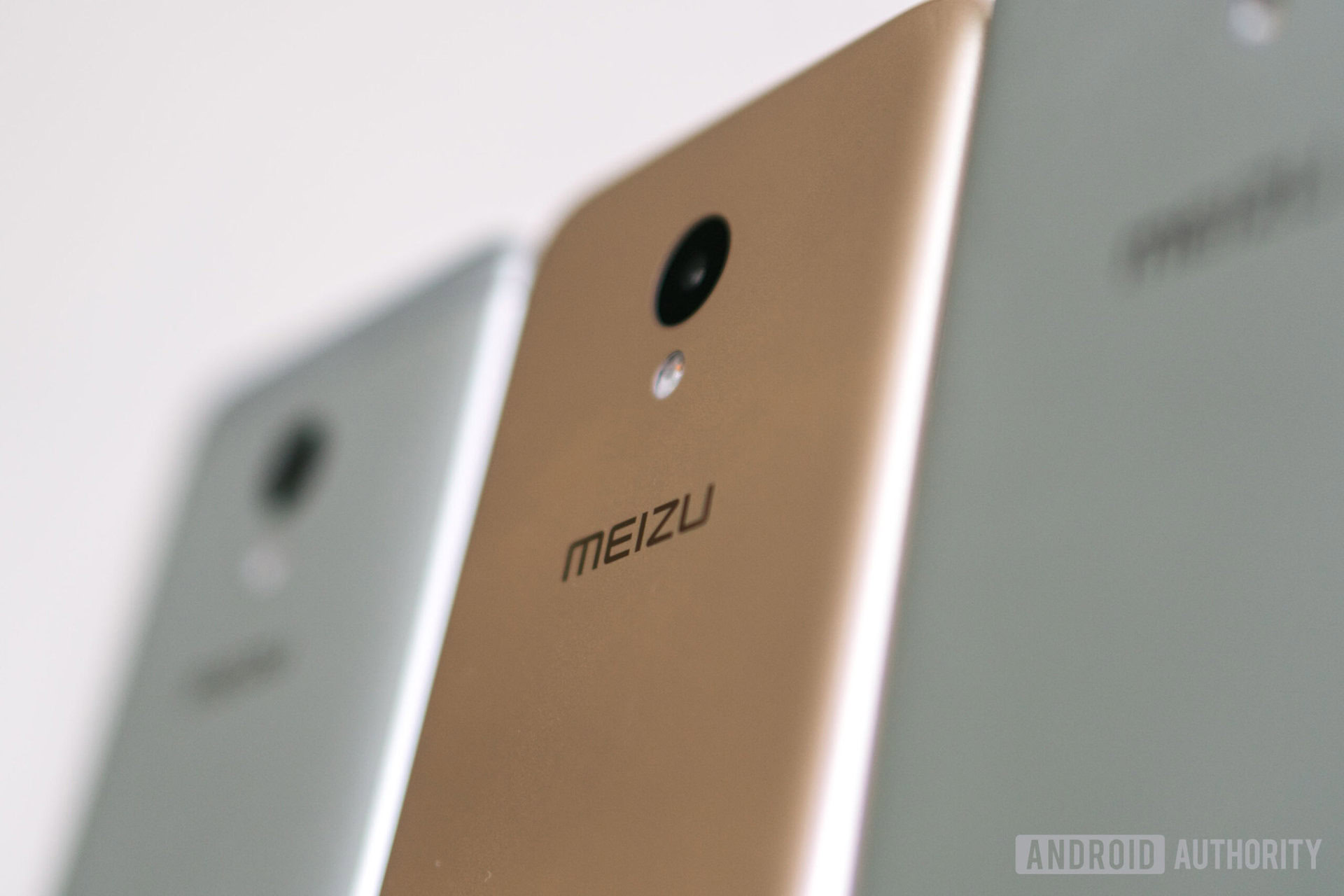
Presumably to cut down on costs, the cheapest model of the trio, the Meizu M5, features a cheaper matte plastic design. While not as premium, the M5’s design is still quite nice. The build quality isn’t quite on par with the others, but it’s still a bit more than we expected at this price.
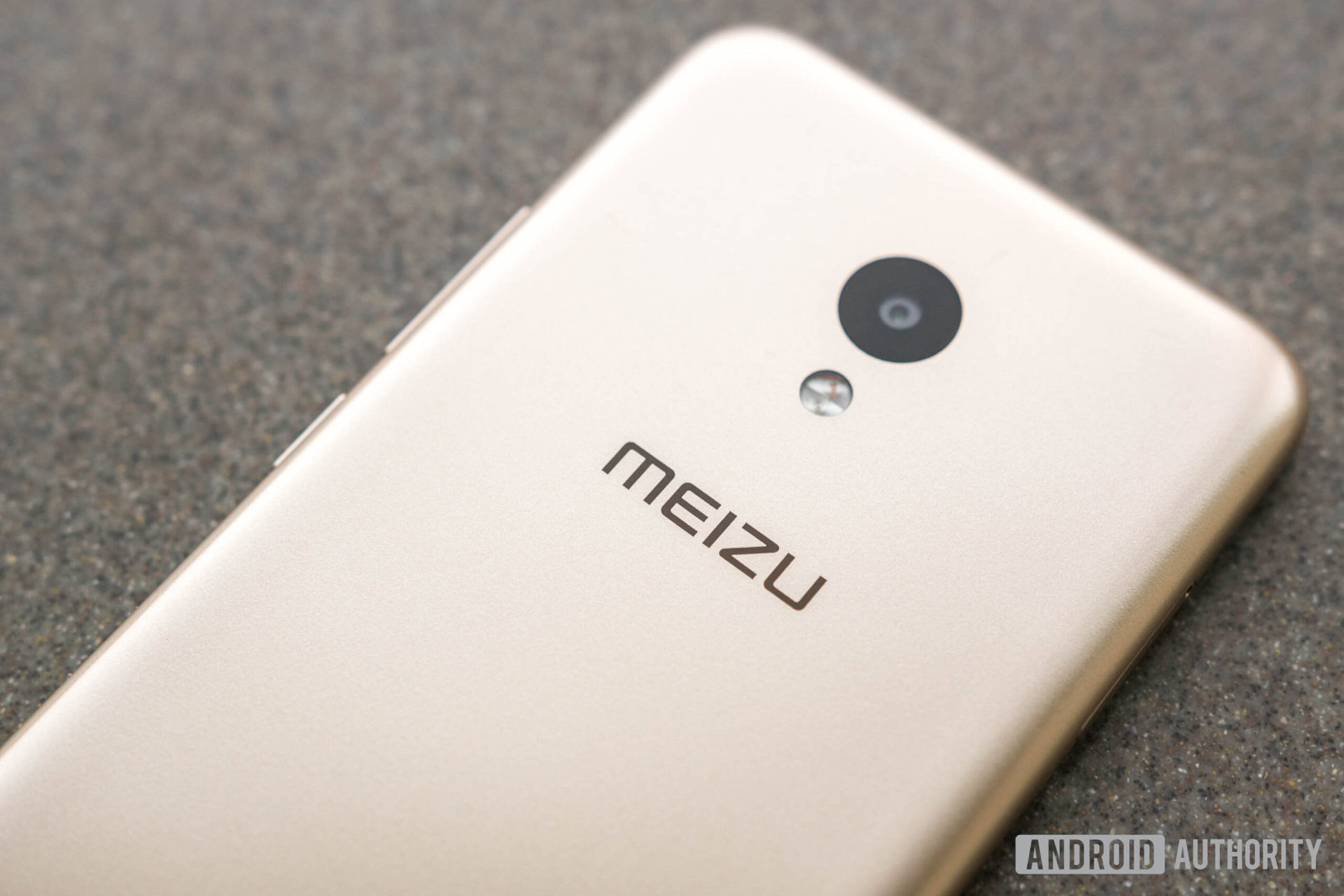
The M5 is the most ergonomic of the bunch
Plus, I personally found the M5 to be the most ergonomic of the bunch. The M5s and M5 Note are nice to hold, sure, but the M5 has more extreme curves. Combined with its smaller size, it’s no wonder why it stands out amongst the others.
Across the board, we have one minor complaint. The power and volume buttons are placed closely together; a lack of tactile differentiation on the power button sometimes made it difficult to find the correct button without fumbling around. This didn’t break the experience by any means, but it’s something that we wish Meizu will consider for future models.
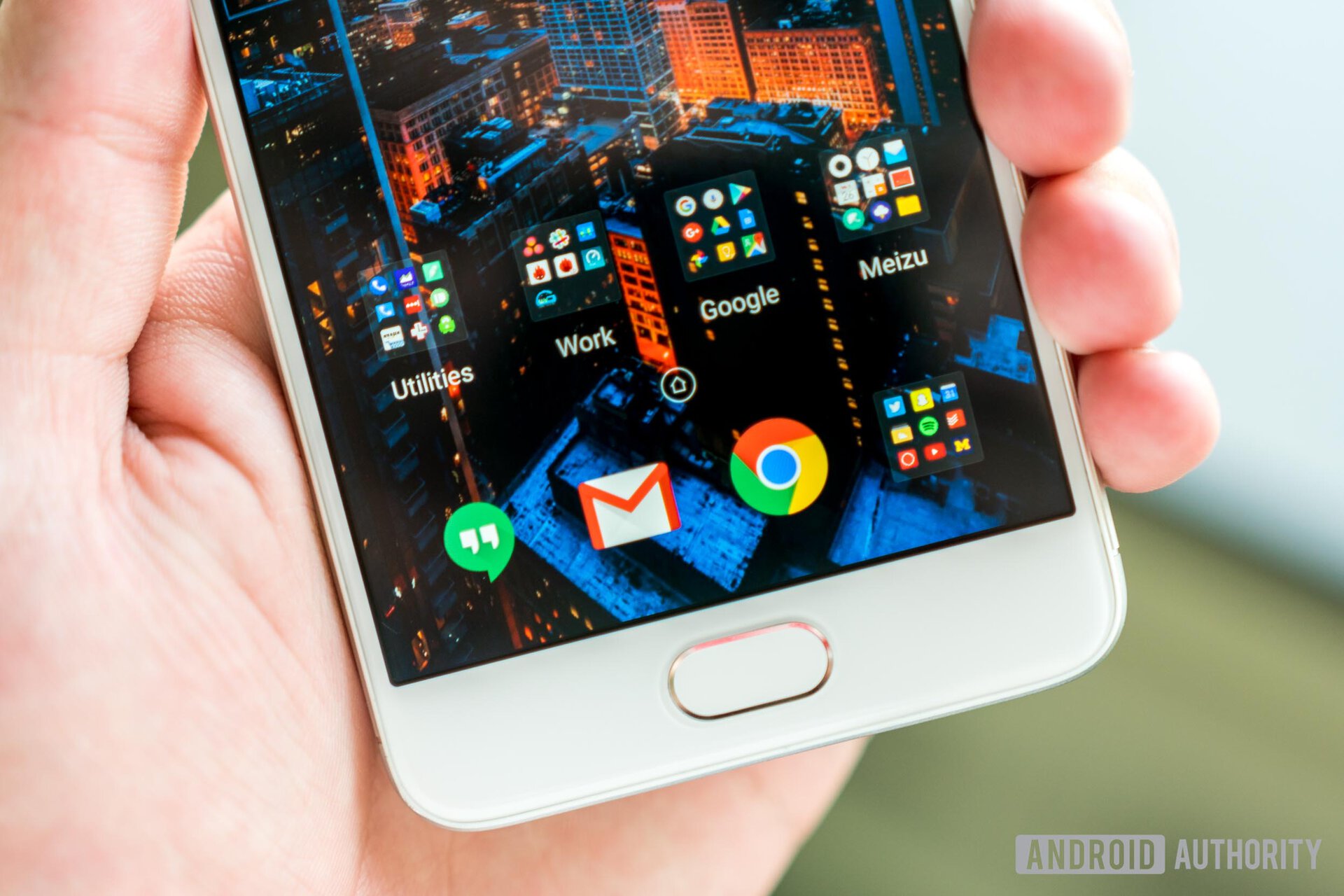
Perhaps the most iconic design feature here is Meizu’s mTouch navigation system. Rather than following the herd of Android manufacturers following the standard three-key navigation system, Meizu has developed their own single-key solution.

Multitasking is handled beautifully without any keys
Multitasking is handled beautifully without any keys; you can simply swipe up from the bottom to quickly lock or close any open apps. Combined with Meizu’s smooth animations, this gesture feels surprisingly natural in practice.
The two most common functions – home and back – are cleverly implemented into the single physical button. You simply tap to go back and press to go home. Although this implementation can certainly take a day or two to get used to, you’ll very likely find yourself missing it when returning to other Android devices.
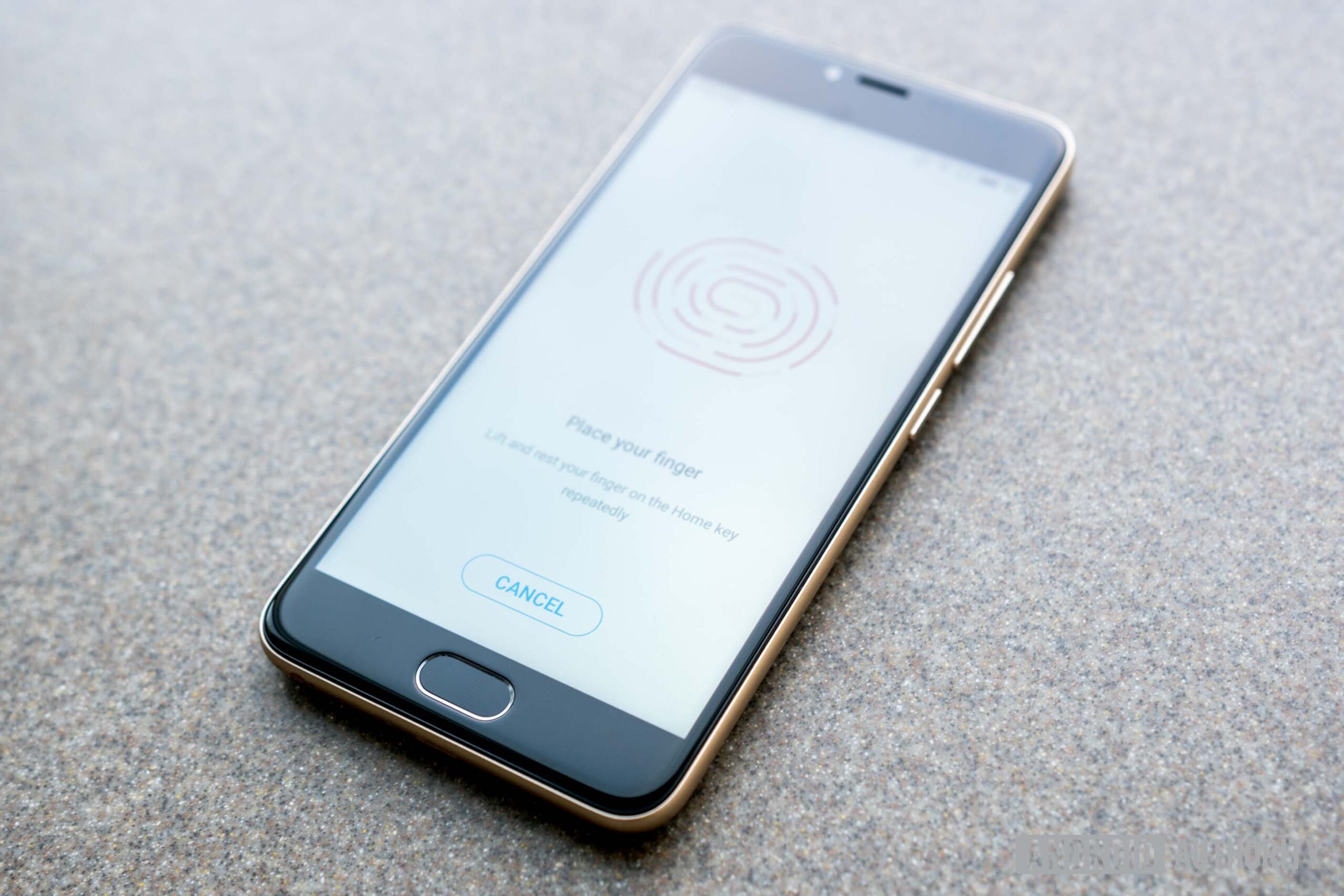
To sweeten the deal, the single button also functions as a fingerprint reader. It’s not the fastest or most accurate reader in the world, but it gets the job done. And, for this price, that’s all you can really ask for.
Display
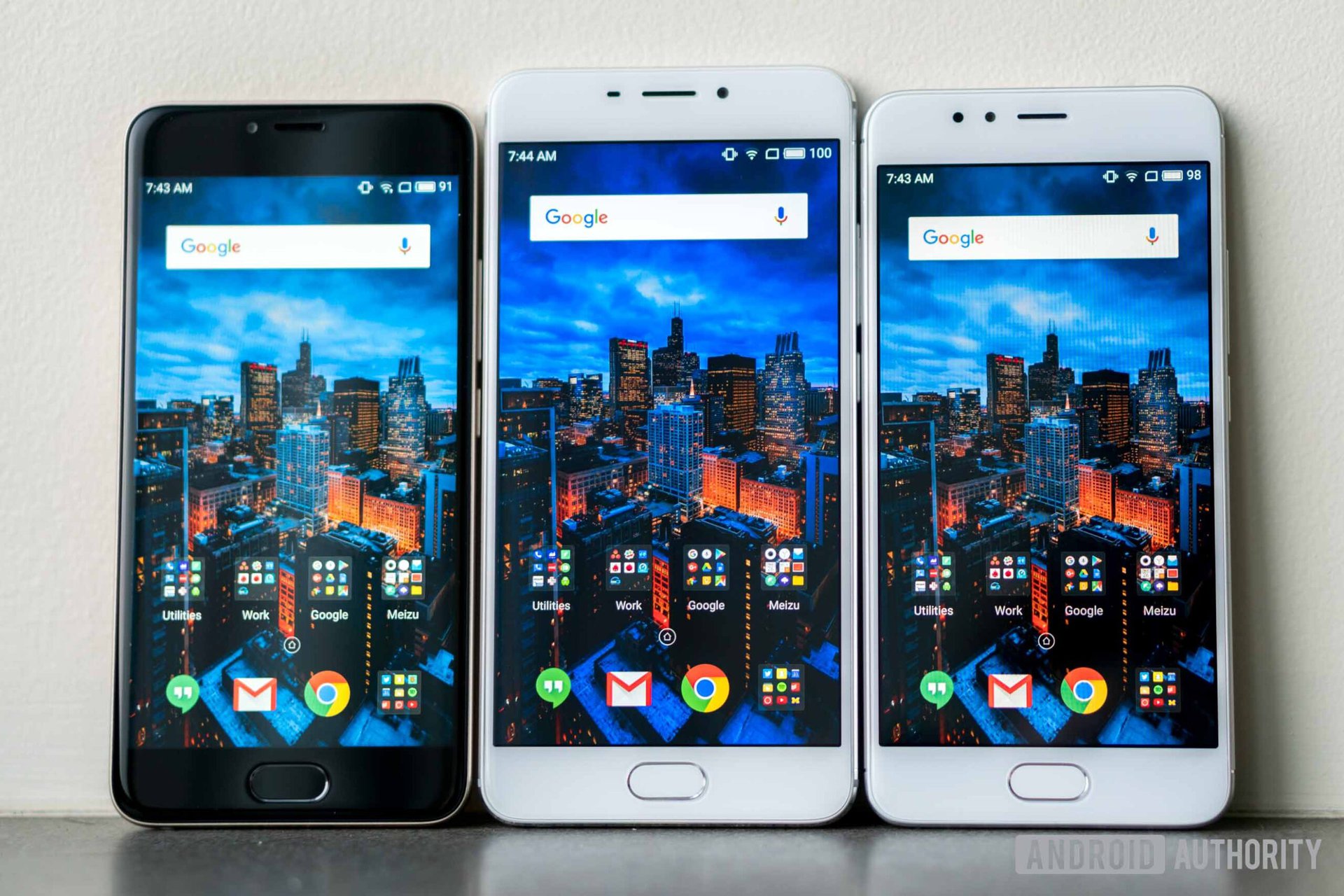
Meizu has taken a logical approach to the displays of the M5 series. The lower-end M5 and M5s feature small 5.2-inch displays, each with resolutions of 720p. The still low-end but ever so slightly more premium M5 Note, however, features a standard 5.5-inch 1080p display.
It seems that Meizu has designed the M5 Note with the heavy content consumer in mind, as its display is not only larger and of higher-resolution, but is also of higher quality. The M5 Note’s display is noticeably better than both the M5s’ and the M5’s; colors are reproduced more accurately and there’s a greater amount of contrast.
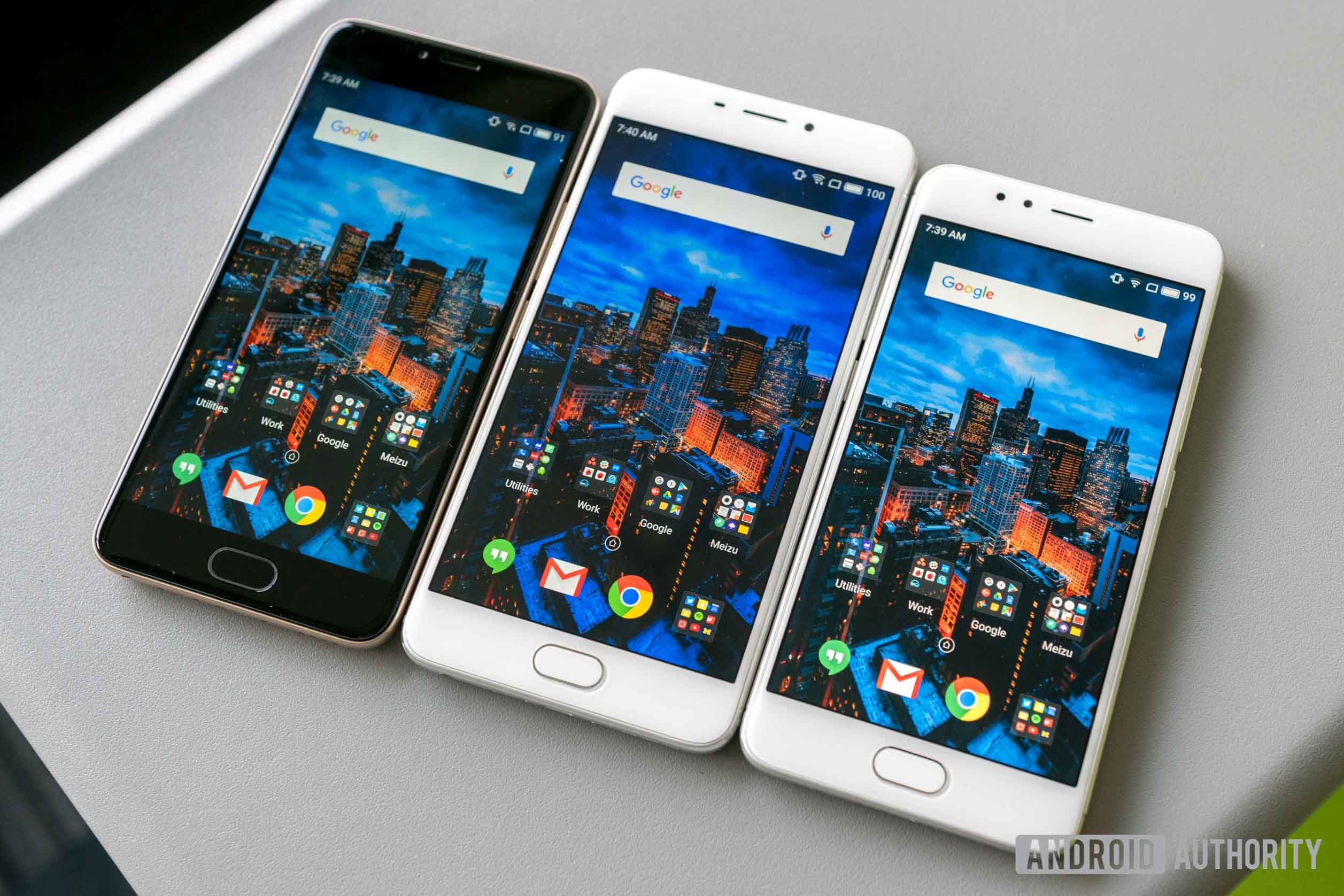
We're disappointed in the sunlight readability of all three models
The displays on the M5s and M5 are still acceptable, but they’re nothing to write home about. While we understand the need to cut costs, we’re disappointed in the sunlight readability of all three models. You definitely won’t be able to comfortably use these phones on sunny days.
There is some good news though. Unlike some competing options, the M5 series includes a standard oleophobic coating. This coating is often taken for granted, despite being very important for a “real glass” feel. We also didn’t notice any scratches on our units after a few weeks of use. These detailed attributes might sound small, but they really can make or break the overall experience.
Performance

To put it quite frankly: Meizu skimped on performance for each of the M5 devices. The phones are noticeably slow even when doing simple tasks like launching apps. We suppose that you might be able to get used to this over time. If you’re coming from an even slightly more expensive device, though, you’ll find these devices a bit poky.
When taking a look at the spec sheet, it becomes evident why this is the case. Although the series is being powered by octa-core MediaTek processors, each of the utilized processors are old, low-end chips. The selection process seems random at best.
The M5 uses the one-year-old MT6750, while the M5s uses the two-year-old MT6753, while still the M5 Note uses the one-and-a-half-year-old MT6755 (otherwise known as the Helio P10). It feels like Meizu is simply clearing stock of their old processors with these units given their inconsistent yet consistently poor choices.
These phones simply aren't intended for high performance tasks like gaming
It’s crucial to recognize that these phones simply aren’t intended for high performance tasks like gaming. If you’re looking for better performance at this price, you’ll want to look at phones that utilize Qualcomm’s Snapdragon processors instead. The Snapdragon 430, in particular, is superior to all that’s here.
Hardware
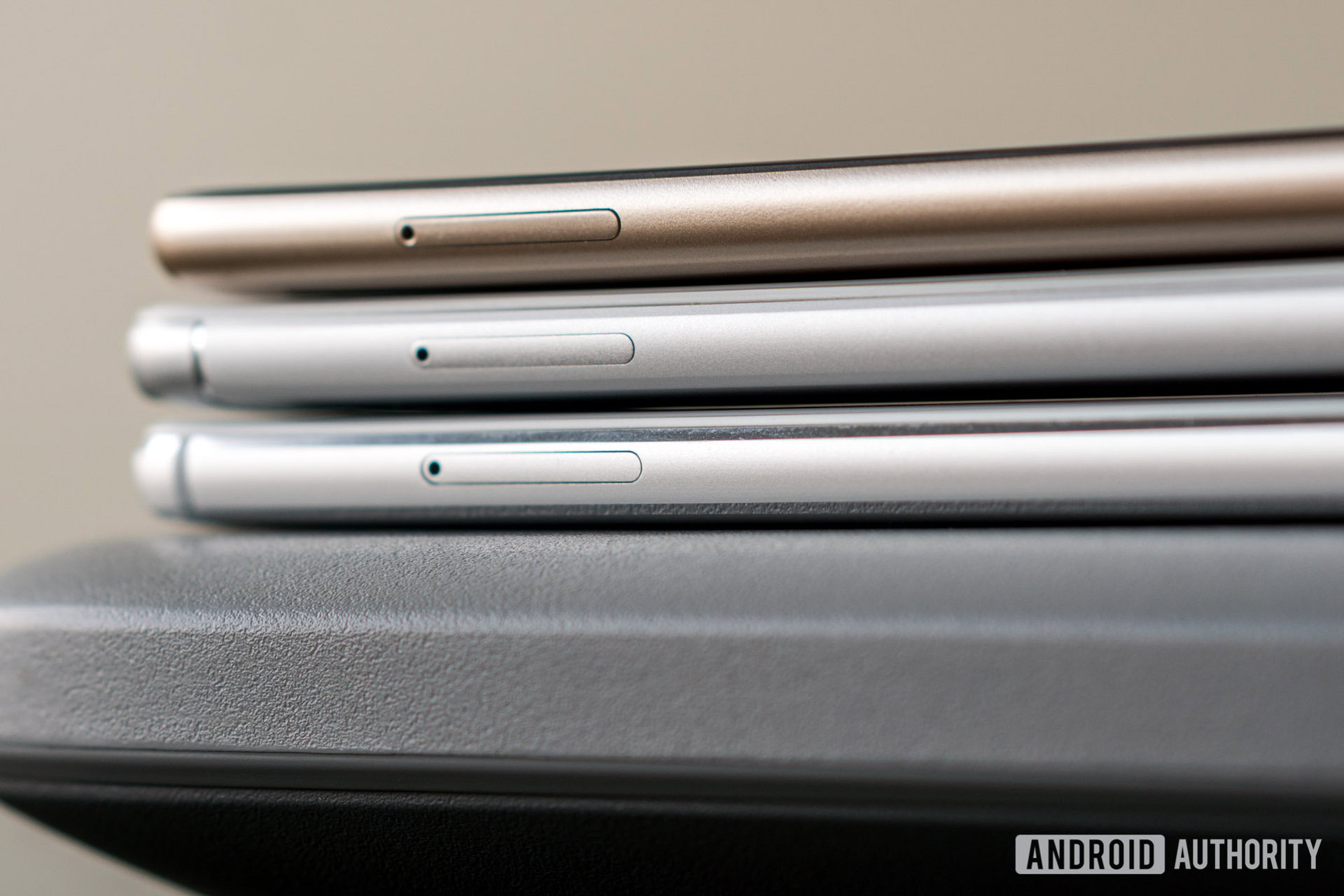
As is standard with Chinese smartphones, each of the M5 devices are unlocked and dual-SIM. Although there is support for 4G LTE in official markets, support in Western markets is limited. For example, you’ll be limited to 3G if you try to use these phones in the United States. We recommend steering clear if you live in or travel to Western countries like the US, as the inability to connect to 4G LTE networks is a massive drawback in this day and age.
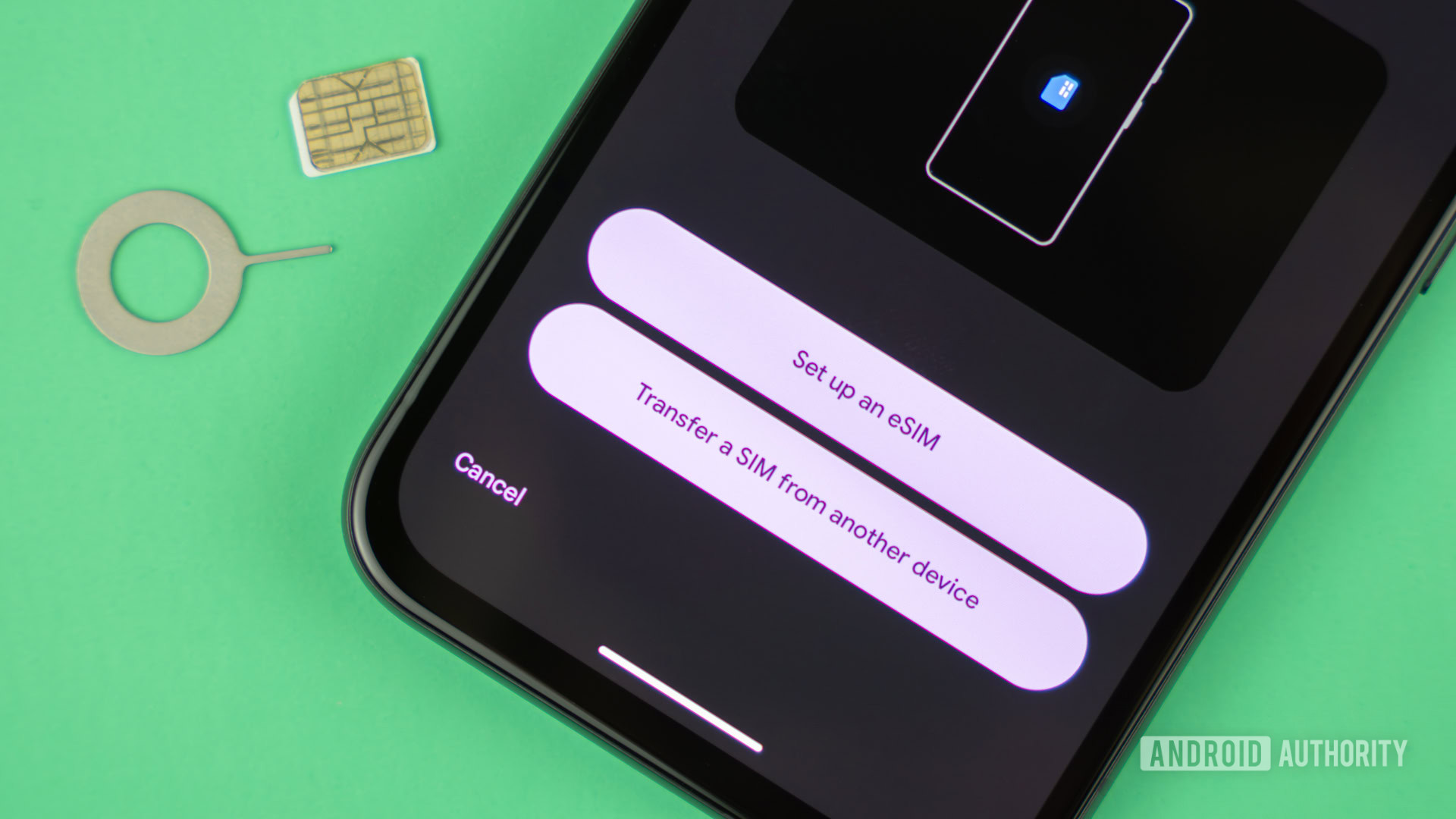
Some may grumble about the 16 GB of storage on each of the base variants, but we feel that the added support for microSD card expansion makes up for this, given the pricing strategy. While you do have to give up one of the SIM card slots in order to make it work, Meizu has given more flexibility than we expect at this price.
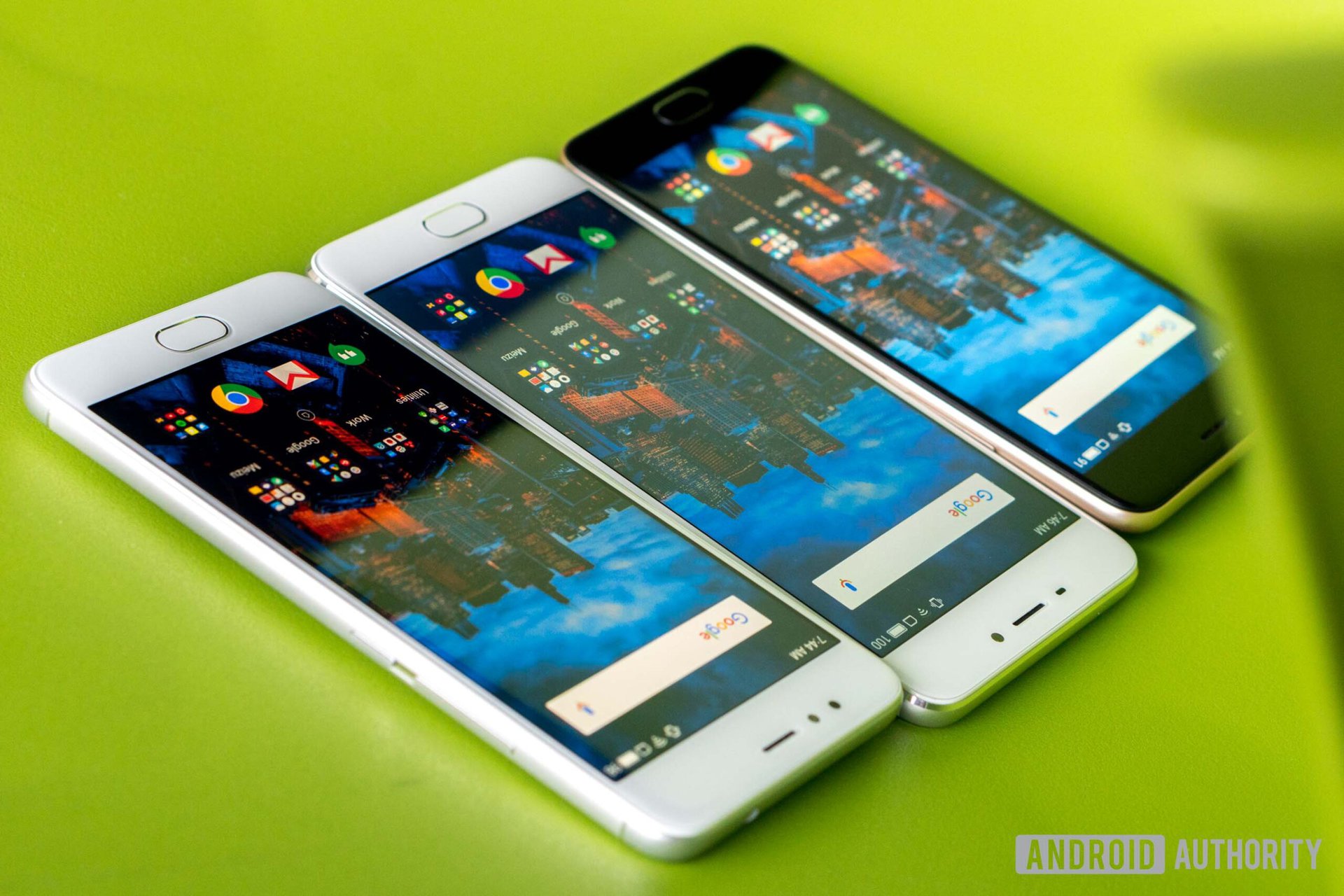
Although none of the Meizu M5 models support 802.11ac, each includes support for 5 GHz Wi-Fi. There’s also support for Bluetooth 4.0. During my time with these devices, I did not notice any signal issues. This is important because some manufacturers use lower quality antennas, which causes reduced signal levels. Fortunately, that does not appear to be the case here.
You'll want to stick to external audio with these phones
The built-in speakers vary in quality, with the M5 Note having the best speaker of the bunch and the M5s having the worst speaker of the bunch. With that said, even the M5 Note’s speaker sounds tinny and distorted. The M5s’ is even worse. Basically, you’ll want to stick to external audio with these phones.
Battery life

Ah yes, battery life. We were quite frankly expecting more from these phones during our testing, given their low-end processors and low-resolution displays. Please understand that our testing numbers overestimate actual battery life, since our testing was performed over 3G rather than 4G LTE, as the phones are not compatible with 4G LTE in the United States.
With that out of the way, I found the Meizu M5’s battery life to be just about average. I received around five and a half hours of screen on time over about thirty hours of use. That’s fine for a 3,070 mAh battery, I guess.
The M5s’ 3,000 mAh battery did slightly worse, lasting for around the same time but with about four and a half hours of screen on time. I find those numbers to be a bit disappointing, but nothing I couldn’t live with.
Strangely, the M5 Note, with the biggest battery of them all at 4,000 mAh, fared the worst. With the same type of usage, I was only getting around three hours of screen on time with a mere twelve hours of use. There was even a day when the phone died after eighteen hours with just one and a half hours of screen on time.
We suspect that there is a bug relating to “system service,” as it routinely uses a substantial amount of power, even when the phone is locked. If you were hoping to use the M5 Note for watching videos, you might want to think twice as you’ll really struggle to keep this phone alive with even light-to-moderate usage.
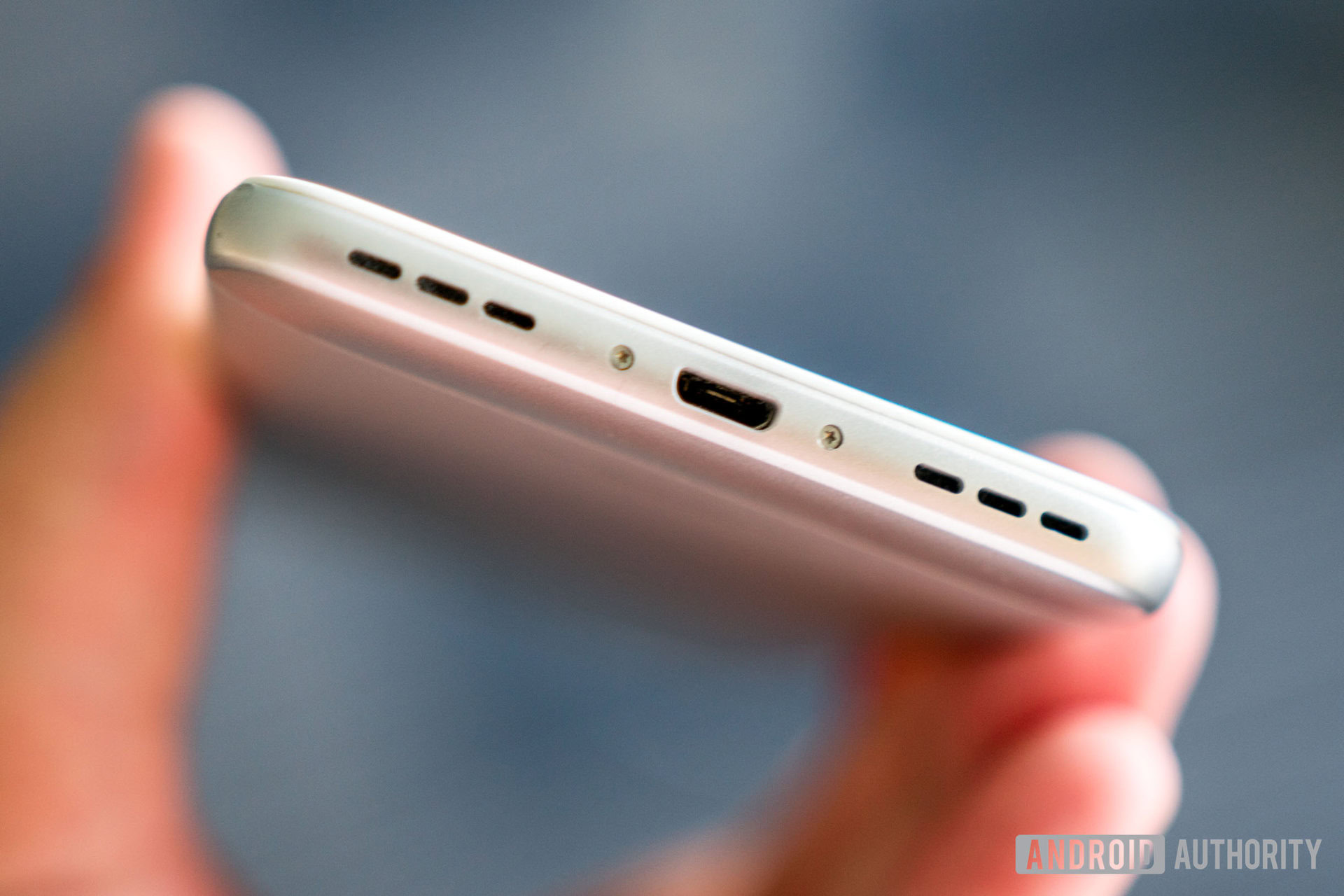
The decision to stick with microUSB seems a bit misguided at this point
The decision to stick with microUSB seems a bit misguided at this point, given the widespread adoption of USB Type-C. To be fair, much of the competition has not made the transition either, so we’ll let you decide whether this is a plus or a negative. At least you won’t have to buy new cables if you’re upgrading from a legacy device.
Camera
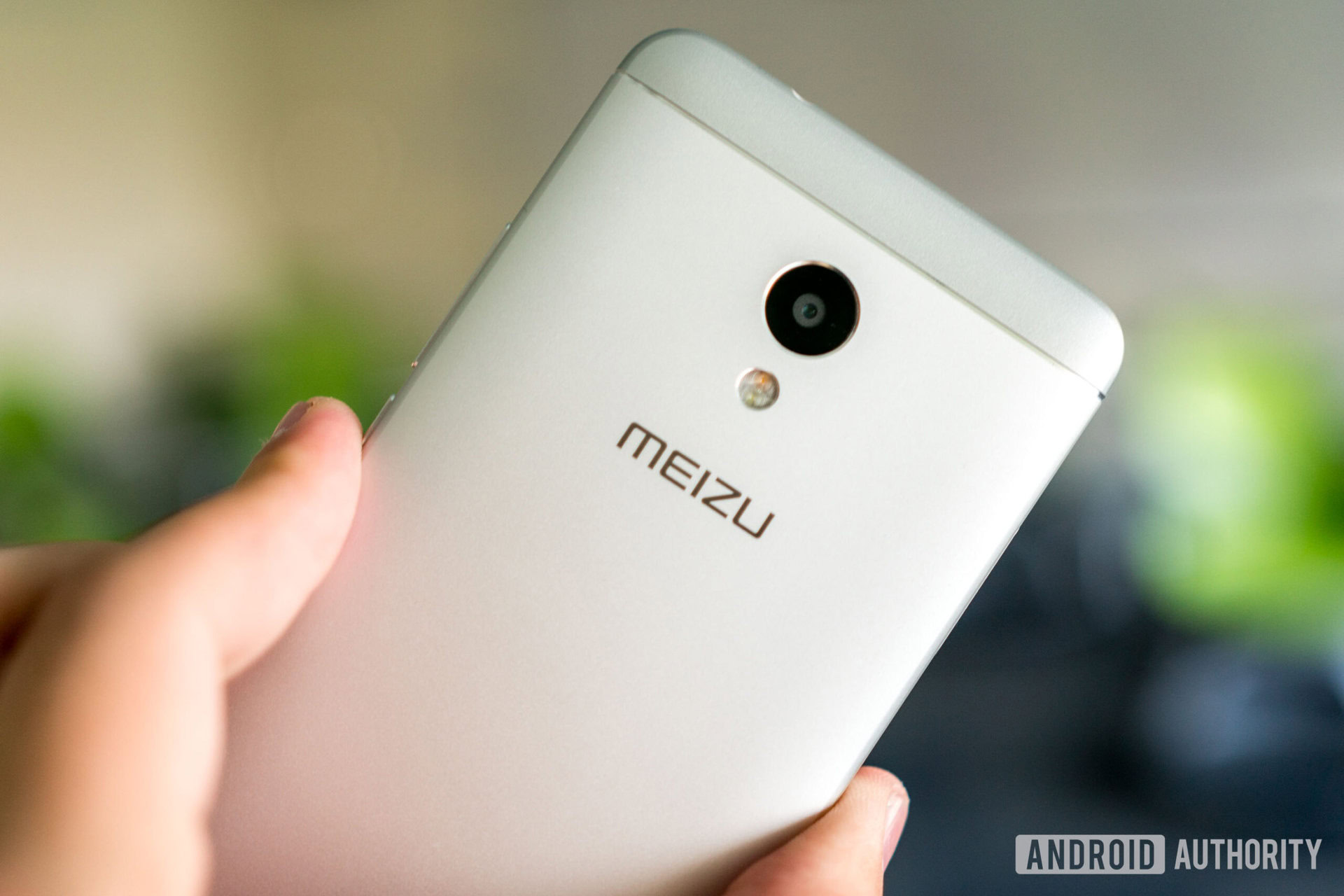
The Meizu M5, M5s, and M5 Note all include 13 MP f/2.2 rear cameras and 5 MP f/2.0 front cameras. Although it appears that each phone’s camera delivers different results, we noticed a few common themes when looking at our camera sample images.
Across the board, each phone struggled with dynamic range. As you can see in the images below, capturing buildings and the sky proved challenging, as the cameras could not properly capture both the highlights and the shadows. There’s also a noticeable lack of contrast, making photos look “flat” and sometimes lifeless compared to the actual scenes. To top it off, images were soft and lacked detail.
Meizu M5 camera samples:
The Meizu M5’s camera sits somewhere between the M5s and M5 Note in terms of quality. While it generally does an okay job, it tends to underexpose and reproduce colors as overly warm. While it’s certainly possible to get a decent shot with the M5, it offers nothing more than we expect at this price.
Meizu M5s camera samples:
Despite its higher cost, the M5s actually performed worse than the M5 in our testing. As you can see in the images above, the M5s had especially poor dynamic range. This made it extremely difficult to capture photos outdoors, as the phone oftentimes couldn’t properly expose entire scenes. There’s also a bit of noise in some of these photos, which surprised us given the amount of light available while shooting.
Meizu M5 Note camera samples:
The camera on the Meizu M5 Note performed better than the others, but not by much. Although there are some images that you’d probably never guess came from a $130 phone, many of the problems with the other models are also present here. Not only does the M5 Note also have a hard time with dynamic range, but it also incorrectly assessed focus on multiple occasions. Combined with largely hit or miss colors, and you’re left with a shooting experience that doesn’t really punch above average.
Each of these devices can capture 1080p video at 30fps, and we’ve included a sample clip captured with the M5 Note in our video review. To see the video for yourself, simply scroll to the top of this page.
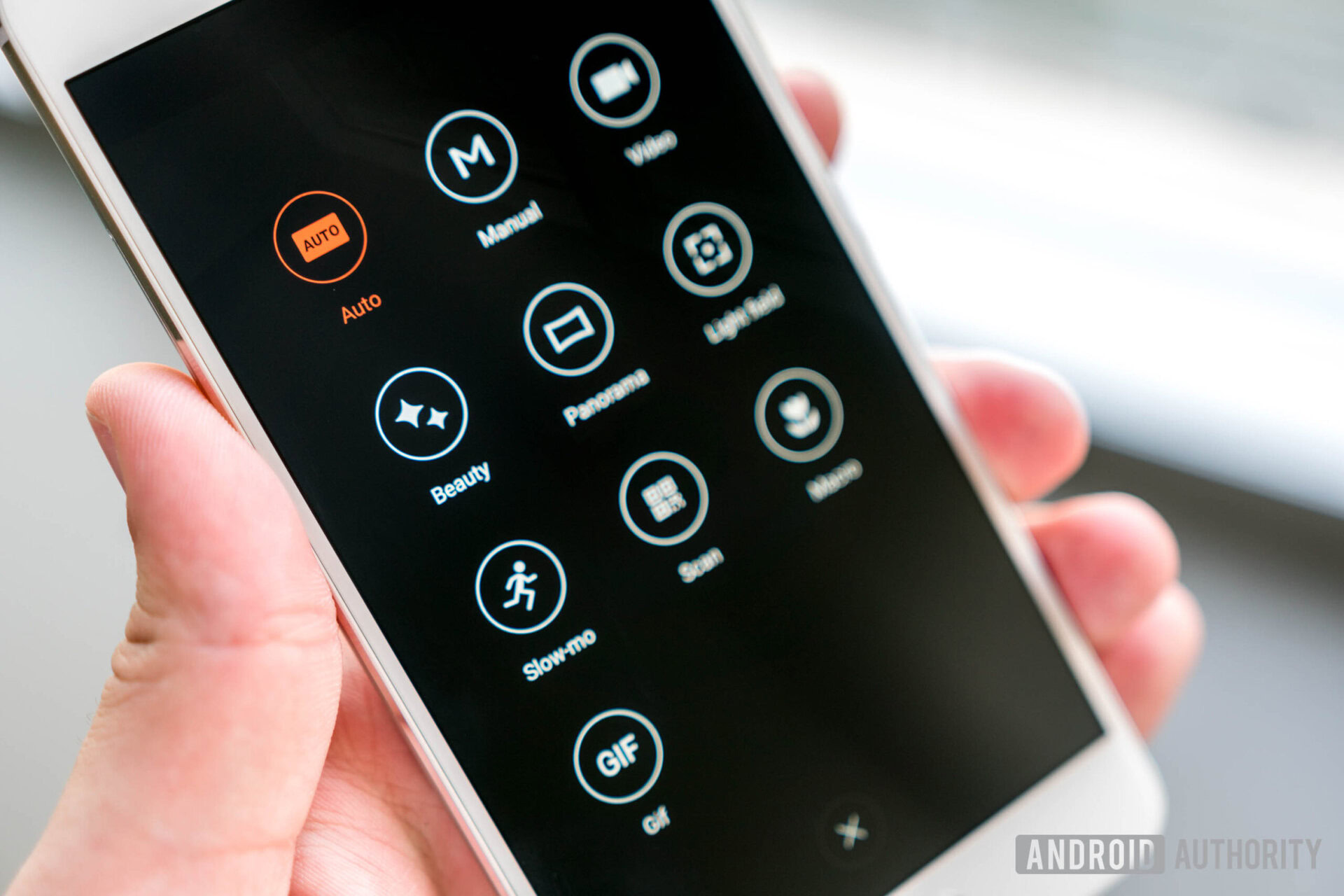
The software aspect of the shooting experience remains the same from previous Meizu devices. As we have stated before, Meizu’s camera app is expectedly quite nice. There’s a nice amount of control, but enough balance to make it easy for a beginner to use.
Software
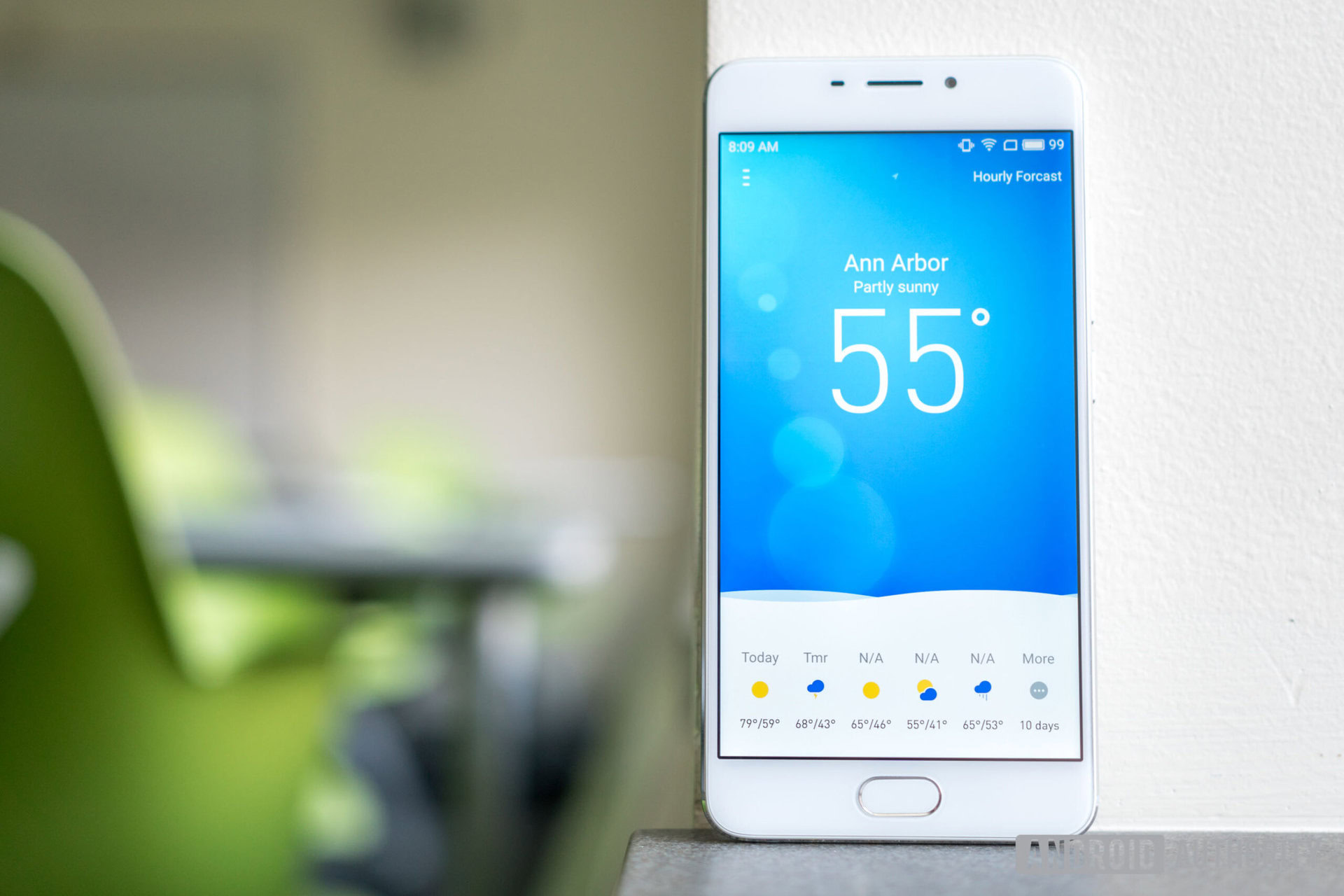
Thankfully, the M5, M5s, and M5 Note each run the same software out of the box: Meizu’s Flyme 5 on top of Android 6.0 Marshmallow. Meizu’s software has been some of our favorite in the past, so it adds a nice touch to the overall experience. Flyme is intentionally and radically different from stock Android, but that doesn’t mean it’s inherently bad.
Flyme offers a truly great core experience, even for foreigners
It’s Meizu’s design work and desire to simplify the user experience that makes Flyme such a pleasure to use day-to-day. The animations are thoughtful, the UI colors are punchy, and a special balance between customization and ease of use is achieved. Flyme offers a truly great core experience, even for foreigners.
Sadly, global firmware isn’t updated as frequently as Chinese firmware, so these models are still stuck on Flyme 5, even though Meizu has released Flyme 6 for the Chinese models. When we first started our testing, too, the M5 Note’s firmware had a few major bugs. Thankfully, those were ironed out with an update. However, it still raises concern as to how committed Meizu is to its global users.
The trouble for global users continues with how Flyme works with Google. Meizu does not have an official partnership with Google, which means that they are not allowed to offer Google apps and services on their smartphones. In order to appeal to global users, Meizu uses unauthorized methods to install and run Google apps and services.
While this approach works, there are some issues to be aware of. Undelivered Hangouts notifications, incompatibility with some apps like Android Pay, and general quirkiness are sadly part of the Meizu experience. You’ll also have to install Google apps using a separate installer app, as Meizu cannot preinstall the apps themselves. We hope that Meizu will take steps towards making an official relationship with Google possible in the future, as it would drastically improve the global user experience.

You’ll also want to keep in mind the update situation. Although Flyme gets updated for a relatively long period of time, Android and security patches do not. That means that you won’t be receiving an Android Nougat update anytime soon, let alone an Android O update. This isn’t unusual at this price, but it’s something to keep in mind.
Specifications
| Meizu M5 | Meizu M5s | Meizu M5 Note | |
|---|---|---|---|
Display | Meizu M5 5.2-inch IPS LCD 1280 x 720 resolution 282 ppi | Meizu M5s 5.2-inch IPS LCD 1280 x 720 resolution 282 ppi | Meizu M5 Note 5.5-inch IPS LCD 1920 x 1080 resolution 403 ppi |
Processor | Meizu M5 1.5 GHz octa-core MediaTek MT6750 | Meizu M5s 1.3 GHz octa-core MediaTek MT6753 | Meizu M5 Note Octa-core MediaTek MT6755 Helio P10 |
GPU | Meizu M5 Mali-T860MP2 | Meizu M5s Mali-T720MP2 | Meizu M5 Note Mali-T860MP2 |
RAM | Meizu M5 2/3 GB | Meizu M5s 3 GB | Meizu M5 Note 3/4 GB |
Storage | Meizu M5 16/32 GB microSD expansion up to 256 GB | Meizu M5s 16/32 GB microSD expansion up to 256 GB | Meizu M5 Note 16/32/64 GB microSD expansion up to 256 GB |
Cameras | Meizu M5 Rear: 13 MP sensor with f/2.2 aperture, PDAF, dual-LED flash, Front: 5 MP sensor, f/2.0 aperture | Meizu M5s Rear: 13 MP sensor with f/2.2 aperture, PDAF, dual-LED flash, Front: 5 MP sensor, f/2.0 aperture | Meizu M5 Note Rear: 13 MP sensor with f/2.2 aperture, PDAF, dual-LED flash, Front: 5 MP sensor, f/2.0 aperture |
Battery | Meizu M5 3,070 mAh Non-removable | Meizu M5s 3,000 mAh Non-removable | Meizu M5 Note 4,000 mAh Non-removable |
Connectivity | Meizu M5 Wi-Fi 802.11 a/b/g/n Bluetooth 4.0, A2DP, LE GPS, A-GPS, GLONASS MicroUSB 2.0 3.5 mm headphone jack | Meizu M5s Wi-Fi 802.11 a/b/g/n Bluetooth 4.0, A2DP, LE GPS, A-GPS, GLONASS MicroUSB 2.0 3.5 mm headphone jack | Meizu M5 Note Wi-Fi 802.11 a/b/g/n Bluetooth 4.0, A2DP, LE GPS, A-GPS, GLONASS MicroUSB 2.0 3.5 mm headphone jack |
Software | Meizu M5 Android 6.0 Marshmallow Flyme 5.2 | Meizu M5s Android 6.0 Marshmallow Flyme 5.2 | Meizu M5 Note Android 6.0 Marshmallow Flyme 5.2 |
Dimensions and weight | Meizu M5 147.3 x 72.8 x 8.2 mm 138 g | Meizu M5s 148.2 x 72.5 x 8.4 mm 143 g | Meizu M5 Note 153.6 x 75.8 x 8.2 mm 175 g |
Gallery
Price
The Meizu M5, M5s, and M5 Note are now available in China. If you’re in an unofficial market, you can import each device, but will likely face slightly higher prices. Please keep this in mind before making any big decisions.
The Meizu M5 is available in two variants, one with 2 GB of RAM and 16 GB of storage for 699 yuan (≈$100) and the other with 3 GB of RAM and 32 GB of storage for 899 yuan (≈$130). The available colors are blue, black, and gold.
The Meizu M5s is also available in two variants, one with 3 GB of RAM and 16 GB of storage for 799 yuan (≈$115) and another with 3 GB of RAM and 32 GB of storage for 999 yuan (≈$145). The available colors are silver, gunmetal, gold, and rose gold.
The Meizu M5 Note is available in three variants, one with 3 GB of RAM and 16 GB of storage for 899 yuan (≈$130), another with 3 GB of RAM and 32 GB of storage for 999 yuan (≈$145), and another with 4 GB of RAM and 64 GB of storage for 1499 yuan (≈$215). The available colors are silver, gunmetal, and gold.
Conclusion
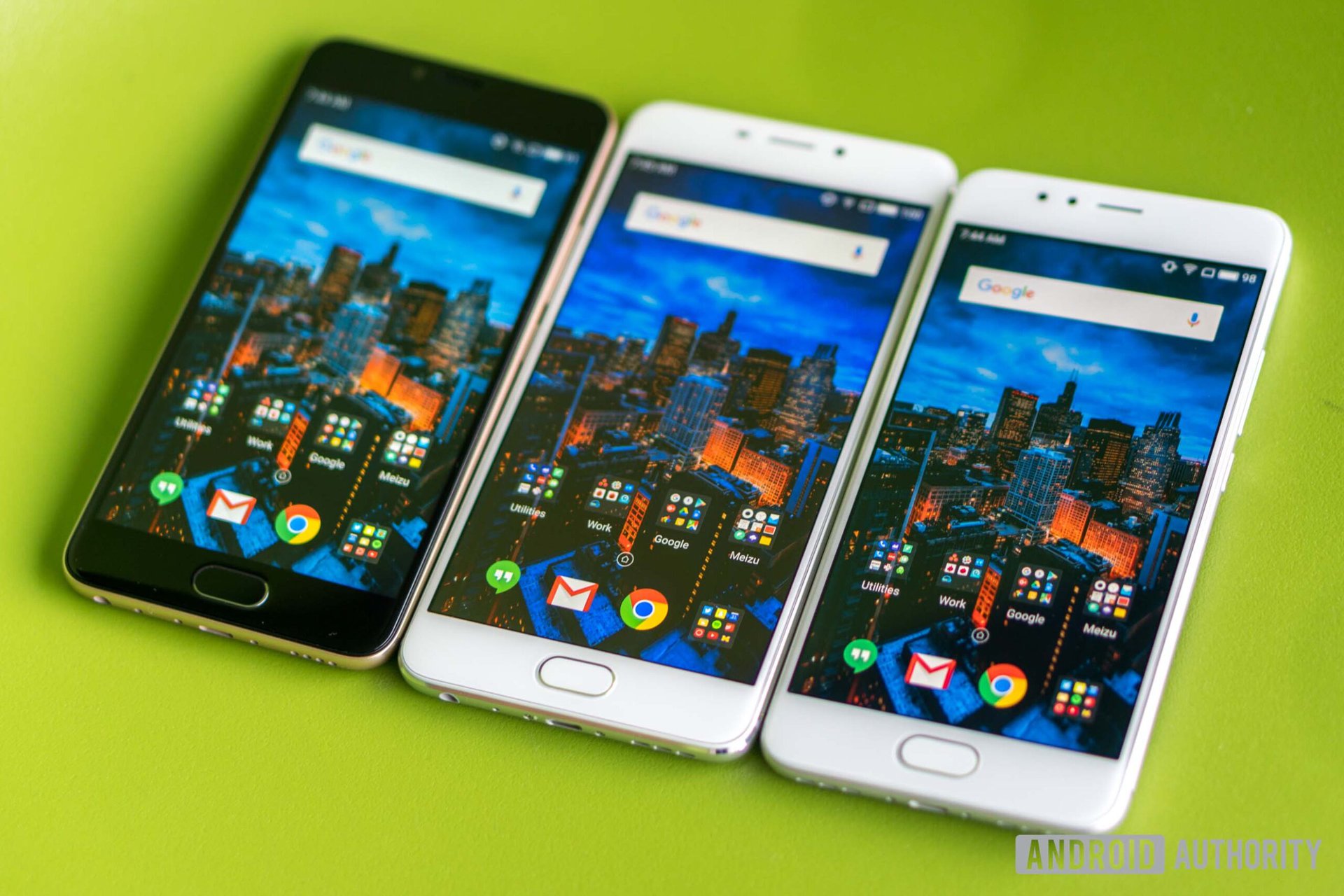
Meizu has once again developed super affordable smartphones with few compromises for its target audience. With premium hardware, software that punches above its weight, and detailed additions like fingerprint readers, it’s no wonder why Meizu continues to find success in this price segment. The amount of value offered by these smartphones cannot be understated when viewed within a vacuum.
However, competition exists and Meizu’s offerings don’t do much to stand out from the crowd. While it’s great to have options, we do not recommend these devices for Western users. The global software quirks, poor performance, and inconsistent battery life are major drawbacks, even for around $100.
Meizu's offerings don't do much to stand out from the crowd
If you’re looking for a device on the cheap, you should instead consider Xiaomi’s budget Redmi 4, Redmi 4a, and Redmi Note 4. While we are quite frankly not in a position to speak on how Meizu’s offerings compare to Xiaomi’s in official markets, we can say for certain that Xiaomi’s options provide an objectively better experience for global users. If you’re in the US, you’ll want to instead consider options that fully support US cellular networks.
You’ve made it to the end of our review of the Meizu M5, M5s, and M5 Note. We hope that this helps you make a more informed purchasing decision. If you plan on picking up one of the phones covered in this review, be sure to let us know in the comment section below!
